
Latest Coronavirus Disease COVID 19 News and Research
California’s data failures stymie efforts to curb the virus
The failure of California's infectious disease monitoring system for a stretch of at least 20 days in July and August triggered potentially deadly fallout that continues to reverberate across the state.
DeSantis says COVID is a lower risk for school-aged kids than flu
Even as his state is a hotbed for COVID-19, Florida Gov. Ron DeSantis has been pushing schools to reopen so parents have the choice of sending children back to the classroom or keeping them home to learn virtually.
Swab, spit, stay home? College coronavirus testing plans are all over the map
Yousuf El-Jayyousi, a junior engineering student at the University of Missouri, wanted guidance and reassurance that it would be safe to go back to school for the fall semester. He tuned into a pair of online town halls organized by the university hoping to find that.
Deadly mix: How bars are fueling COVID-19 outbreaks
From the early days of the U.S. coronavirus outbreak, states have wrestled with the best course of action for bars and nightclubs, which largely have their economic prospects tied to social gatherings in tight quarters. As the virus has pinched the industry’s lifeblood, bar owners in a handful of states are fighting in court against government orders that they stay closed.
SARS-CoV-2 ORF9c responsible for immune evasion and efficient infection of host
A recent study by researchers at the Sanford Burnham Prebys Medical Discovery Institute and the University of California San Francisco and published on the preprint server bioRxiv in August 2020 shows that a protein encoded by the subgenomic sequence ORF9c of SARS-CoV-2 is responsible for the low antiviral response in infected humans, enabling the successful replication of the virus in the host.
Macaques show low neutralizing antibody and cellular immune response to SARS-CoV-2
A new study published on the preprint server bioRxiv* in August 2020 presents a cynomolgus macaque model that develops symptomatic SARS-CoV-2 infection in a mild form, with low or no antibody responses, making it suitable to study human responses to vaccines and drugs targeting the virus.
Researchers compare COVID-19 transmission risk when singing, speaking and breathing
Now, a new study* set to determine if singing and playing of woodwind and brass instruments produce more respiratory droplets and aerosols than speaking. Further, they want to know if the size and temperature of the venue will make a difference in the accumulation of aerosol droplets in the air.
Bioinformatics identifies key genes and cellular pathways in COVID-19
The COVID-19 pandemic is showing no signs of waning or extinction anytime soon. Now, a new study published on the preprint server bioRxiv* in August 2020 shows a new bioinformatics approach to studying the pathogenesis of this disease, by uncovering the differentially expressed genes (DEGs) and cell signaling pathways that cause the disease characteristics. This will help develop better therapies to counter the effects of these genes.
No evidence of active SARS-CoV-2 in breastmilk of infected women
A recent study published in the journal JAMA in August 2020 suggests that SARS-CoV-2 RNA does not represent replication-competent virus and that breast milk may not be a source of infection for infants.
Geographers conduct first daily surveillance of emerging COVID-19 hotspots
Over the course of the coronavirus epidemic, COVID-19 outbreaks have hit communities across the United States. As clusters of infection shift over time, local officials are forced into a whack-a-mole approach to allocating resources and enacting public health policies.
Lack of consistency in COVID-19-related data could harm prevention efforts
Since COVID-19 emerged late last year, there's been an enormous amount of research produced on this novel coronavirus disease.
Influenza A virus can spread by airborne aerosolized fomites, finds study
Viruses like the influenza virus and even the novel coronavirus are capable of spreading from person to person via airborne droplets as well as dust, fibers, and other surfaces. Now, a new study provides evidence of airborne virus transport on microscopic particles called “aerosolized fomites.”
Research finds link between COVID-19 mortality and morbid obesity
The prevalence of morbid obesity in a population is associated with negative outcomes from COVID-19, according to an analysis by researchers at The University of Alabama of morbid obesity data and reported COVID-19 deaths in the United States.
Websites selling home-based COVID-19 testing kits providing inadequate or misleading information
In the UK and US, many websites are selling direct to user self-sampling and testing kits to detect SARS-CoV-2. Recently, a cross-sectional observational study was carried out to check the completeness and accuracy of information provided by these websites.
Fewer rhinovirus infections in Philadelphia after COVID-19 stay-at-home orders
Philadelphia and its surrounding counties issued a series of "stay-at-home" orders on March 17, 2020 in an effort to curb the spread of COVID-19.
New SARS-CoV-2 vaccine effective in macaques
Researchers from the biotechnology company Novavax in Gaithersburg, Maryland, have developed a vaccine against severe acute respiratory syndrome coronavirus 2 (SARS-CoV-2) that successfully induces immunogenicity and protection against the virus in macaques.
New hybrid mask allows ENTs to see more patients
An ear, nose, and throat doctor has invented a simple mask design that significantly improves safety during aerosol-generating procedures of the head and neck.
COVID-19 could compromise key element of immune response
Researchers at the University of Melbourne have made the unsettling discovery that infection with severe acute respiratory syndrome coronavirus 2 (SARS-CoV-2) might compromise the activation of the CD8+ T-cell responses that would usually ameliorate disease and drive recovery in cases of respiratory disease.
Whey protein from human breastmilk inhibits SARS-CoV-2 infection
Many scientists have reported the effects of severe acute respiratory syndrome coronavirus 2 (SARS-CoV-2) infection on pregnancy and the virus has been detected in breastmilk. Now a new study published on the preprint server bioRxiv* in August 2020 shows that whey protein in human breastmilk efficiently prevents infection with SARS-CoV-2 as well as post-entry viral replication.
Low indoor air humidity increases spread of SARS-CoV-2
The airborne transmission of the coronavirus SARS-CoV-2 via aerosol particles in indoor environment seems to be strongly influenced by relative humidity.

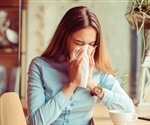


_ae351e3c0c2d43f8aa9fc09c678cb7cc-150x125.jpg)
_57d5a39bb11348808146eea688f8c6d1-150x125.jpg)
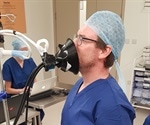
_3c0ec173395e419f987901fe645601c3-150x125.jpg)
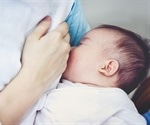

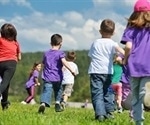
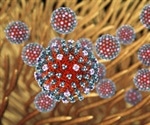
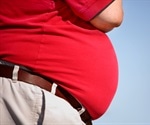
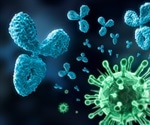
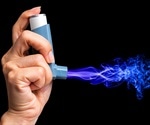
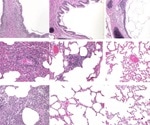



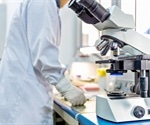






















.png)









No hay comentarios:
Publicar un comentario